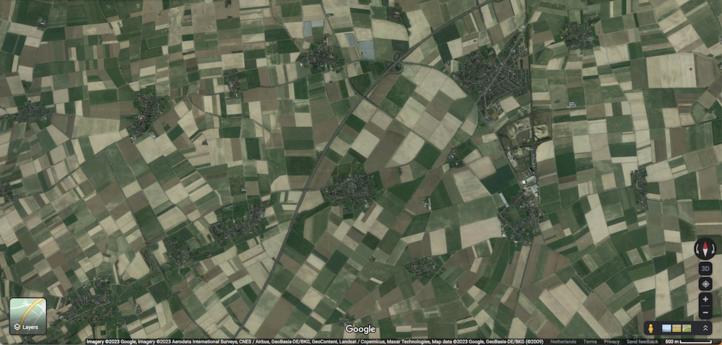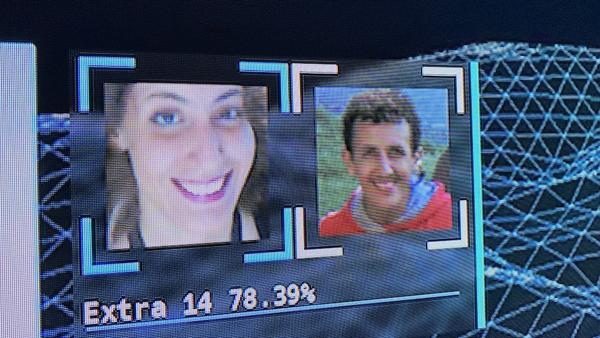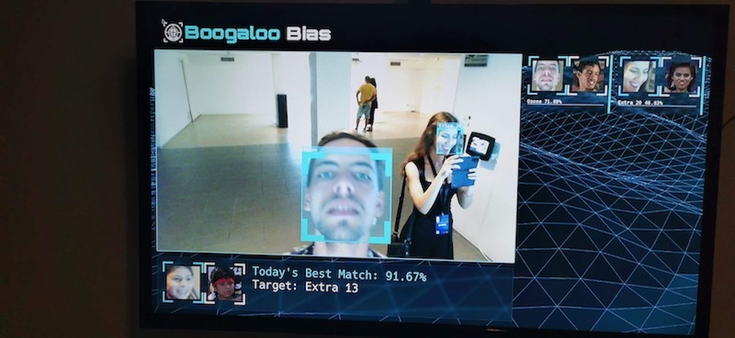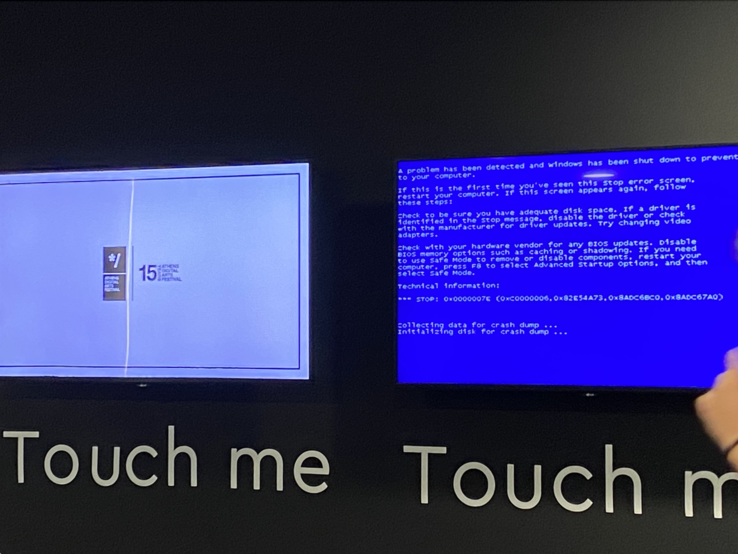“(...) texting, e-mail, posting... all of those things let us present the self as we wanna be. We get to edit and that means we get to delete and that means we get to retouch. The face, the voice, the flesh, the body. Not too little, not too much, just right.” 62
Modern computation has planted a seed in every facet of our lives which has grown at tremendous velocities and keeps on accelerating, and computational art has been successful in absorbing all artistic media in a single digital substrate, which, according to Miguel Carvalhais, “promot[es] remixability of contents and processes”.63 The question of what exactly is computational art naturally arises. If it can be anything, how can we know what’s within or beyond its bounds? Carvalhais later argues that computational art doesn’t even need to make use of modern digital computers at all to be categorised as such. The only requirement is that computation is used in their construction, understanding, and development.64 Carvalhais uses the work Composition nº1 (1962) by Marc Saporta, in which a book of 150 loose leaves is shuffled before being read, as an example of the independence between computational art and digital machines.65 If I were to transpose these ideas to the world of Western music could Webern’s 12-tone serialism be computational? Is Bach’s counterpointal work computational? And ancient Greek music? One could say that they all employ some kind of “computer-esque” element: algorithmic permutations, symmetries, and ratios. I’ve nonetheless met several people - concertgoers, players, and composers alike - that couldn’t equate Bach’s beautiful and perfect understan-
New Aesthetic
In 2011, artist James Bridle coined the term “New Aesthetic”. On their blog, Bridle collected a number of images that seemed to point to the arrival of a new visual language which had been taken from the digital world.67 The common aspect of most of these images is how they seem to distort reality by employing visual cues that are reminiscent of the visual language of the world of computation: the first picture on the collection is a satellite image where an assortment of farms create a pixelated landscape. Further down, what appears to be a pixelated couple is shown; then, pixelated clothing; after that, a pixelated building. For Bridle, these design choices are a symptom of a new computer based aesthetic which blur the boundaries between real and virtual.68 69 Dutch blogger and artist Eef creates “Google Earth Art” by painting landscapes in oil over screenshots of Google Earth.70 On the topic of landscape paintings, Bridle comments that what used to be an art form that included open fields became a landscape “as painted by satellites”.71
In 2022, I was in Athens attending the Athens Digital Arts Festival, where I was able to see all kinds of perspectives on what digitality meant. More than a hundred works were on display, coming from all types of artistic fields. Boogaloo Bias (2021) by artists Derek Curry and Jennifer Gradecki is an installation that makes use of a surveillance camera and facial recognition software.76 It intends to address some of the known problems with the unregulated use of facial recognition technologies, including the practice of ‘brute forcing’ where, in the absence of high-quality images of a suspect, law enforcement agents have been known to substitute images of celebrities the suspect is reported to resemble. In this installation, the substitution was made with the faces of characters from the movie Breakin’ 2: Electric Boogaloo, which became an internet meme in the 2010s.77 Visitors of the installation had their faces analysed and paired with a “best match” from the movie. At the same time, recordings of the Capitol Riots of the 6th of January 2021 were also being played and analysed by the system. According to the creators, the system was looking to identify Boogaloo Bois (a play on “Blue boys”, supporters of police in the USA) in order to bring them to justice.
Post-Digital art
Alexander Schubert writes that “(...) digitalization cannot be considered complete, but at least omnipresent”.72 This is the post-digital condition.73 At its core, post-digital art can be seen as the intersection of the physical and the virtual. According to Schubert, post-digitality exposes how virtuality has permeated our reality and defined how we feel, relate with one another and the way we behave. In a post-digital world, technologies are “invisible”, they no longer create a feeling of strangeness within humans and screens are the main gateway to establish a connection with the world.74 A key aspect of Post-digital art is its use of glitch, either found or introduced by the user. By exploiting errors and glitches within digital systems as a creative tool, an artist exposes the inherent instability of such a system, thus subverting the medium itself and creating unpredictability and randomness.75
ding of musical ratios and “pathos” with serialism’s highly “mathematicised” and algorithmic approach to music-making that created in their mind, unintelligible noise. I’m sure they wouldn’t be too happy if these were to be put in the same category of art creation. The realisation that computational processes have been present throughout the history of music-making can be daunting and while these comparisons might be - perhaps even should be! - a bit absurd, they are in a way useful as a thought experiment to understand how intertwined the idea of computation is with our human cognition.
The point I’m trying to arrive at is that we have designed digital machines to be more similar to us than we sometimes care to acknowledge. In my view, they are meant to reflect our way of problem-solving, perceiving our surroundings, and acquiring knowledge; and while we try to maintain the illusion that we are different in nature, I see this dichotomy of us vs. machine as a falsehood. To me, it has always been us with (digital) machine.
But first and foremost, I am an artist, even if I try to put on a technologist's cloak. As such, when witnessing changes around me, I will use my artistic work to question and reflect on said changes. I share Omar Kholeif’s notion that art is the “great barometer of cultural change, [and] build[s] the kind of vocabulary necessary for narrating its recent history.”66 So, in my quest to understand the influence of technology in artistic creation, and also to understand where I could place my own work in the contemporary art scene, I found that New Aesthetic, Post-Digital art and Post-Internet art were the artistic veins I should get acquainted with.
Post-Internet art
Post-Internet art can be seen as analogous to the idea of post-digital art since it assumes that the phenomenon of the internet has established itself on many (if not every) layers of human existence. We are therefore irreversibly shaped by it, as well as our interactions with others around us. The key difference between post-internet art and post-digital art is that the former focuses on the network-specific components of the digital domain. According to Schubert, the internet offers a “decentralized and, initially, autonomous infrastructure” which fosters the democratisation of knowledge and information.78 Some of the common topics and practices may include utilising big data, using GPS information, accessing private user information, or integrating the aesthetics of social media pages. As an example, Image Atlas (2012), by Taryn Simon and Aaron Schwartz, is an internet-based work that “investigates cultural differences and similarities” by using top image search results of a search engine. The user can choose what countries to show on the screen and sort them either alphabetically or by GDP. The results can range from innocuous to extremely problematic, as it depends on each of the “country’s” perspectives on the matter. In Goodbye World!, Omar Kholeif described the results of inputting the word “Arab”. While in countries like the USA, they got “innocuous-looking Arab men”, when scrolling down to Israel, the picture results were of ridiculous or criminal-looking people.79 The conclusion to take with this work is that no search engine delivers neutral information and “top picture result” actually means “top cultural bias result” towards a certain subject.















